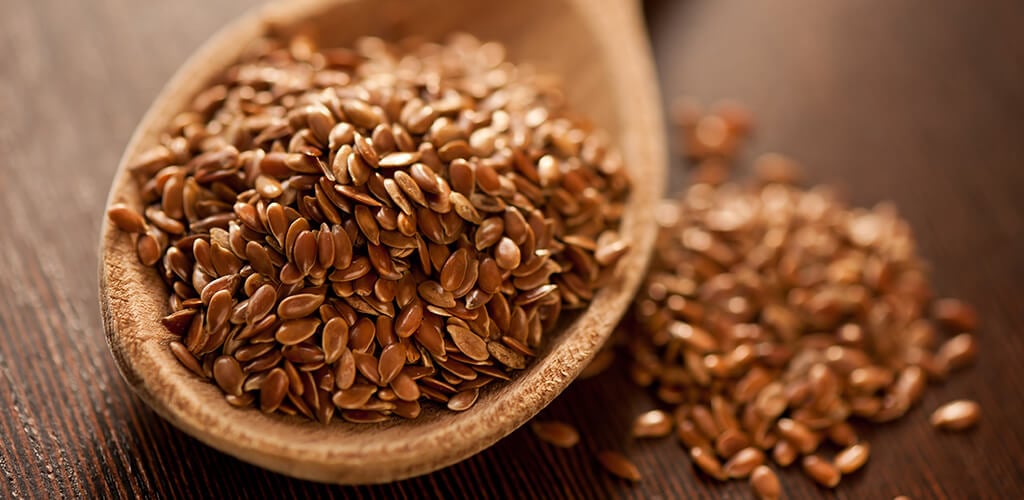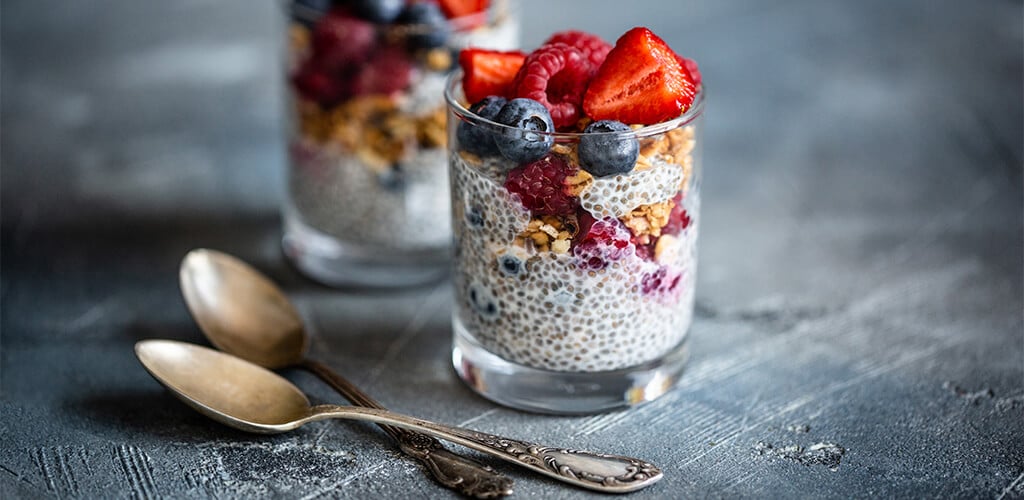Chia Seeds vs. Flax Seeds: What's the Difference?

At the top of the superfoods craze list sit two seeds – chia and flax. While these nutrient-dense seeds left their mark on the health food industry in the form of chia pudding and flax crackers, you may have asked yourself (or a friend), what exactly are they? Are they really good for you? What are the health benefits? Is one better than the other? And how do I include them in my diet?
Well, we’ve got you covered! Here are some scientific nutrition facts about the two seeds that will help you become a superfood expert, accompanied by some general tips for how to consume and get the most benefit from them.
What are Chia Seeds?
Chia seeds, also known as Salba seeds or Mexican chia, are small, round seeds and are black or white in color. Chia is a species of flowering plant in the mint family and was discovered by the ancient Mayan and Aztec cultures in native Mexico and Guatemala. The Aztec and Mayans believed the seed contained supernatural powers because of its ability to increase stamina and energy over long periods of time – perfect for battle, or nowadays the gym.

Loaded with nutrients, chia seeds can have important health benefits including reducing blood sugar and chronic inflammation. They offer bone nutrients, Omega-3s and antioxidants, and are high in fiber and protein which can help with weight loss.
Lastly, given their petite size, they can be easily incorporated into your diet. When soaked in liquid, chia seeds form into a gel. While ancient Mayans consumed the seeds by drinking a combination of seeds and water, you can add them to smoothies or sprinkle them over your cereal in the morning.
What are Flax Seeds?
Flax seeds or linseeds are a member of the Linaceae flowering plants family. The seeds, which are shaped similarly to pumpkin seeds, come in two colors: brown and golden. Flax seeds originated from Egypt, but are now produced all over the world; with Canada the largest producer. Flax seeds contain many nutrients, but their stand-out components are Omega-3 fatty acids, lignans – a plant estrogen offering antioxidant qualities – and fiber, both soluble and insoluble.

Flax seeds are best eaten when ground as this releases their nutrients. They are a versatile ingredient and can be added to yogurt, salad or beverages.
What Nutrients Make Up Chia and Flax Seeds?
While chia and flax seeds both offer health benefits, chia seeds provide a bit more fiber and mineral content, whereas flax seeds offer Omega-3 fatty acids, manganese, copper and potassium. Both seeds are rich in nutrients and are a great addition to most diets.
You may also like:
A Beginner's Guide To Protein Powder

